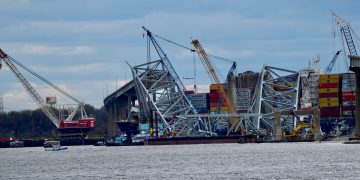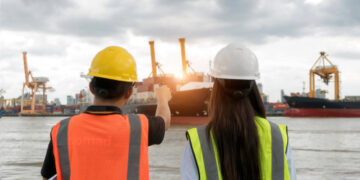During SiBCON (Singapore International Bunkering Conference and Exhibition), SGMF announced the release of three new guides, providing guidelines for the bunkering operations of ammonia and methanol, as well as an emergency response guide for ammonia.
SGMF also revealed its new brand during the exhibition, reflecting the organisation’s current activities in the four key marine fuels for the future: LNG, methanol, ammonia and hydrogen.
While the search for the perfect alternative fuel continues, methanol and ammonia are two of the fuels that the global merchant fleet has identified and is looking to implement, emphasising the importance of these guidelines.
A range of potential hazards are expected with bunkering ammonia and to date there is very limited experience, with only one series of bunkering trials conducted as at March 2024. As a result, Bunkering Guidelines for Ammonia draws primarily on the current experience of LNG bunkering, the wider ammonia marine transport industry and the shoreside ammonia production and transport industry experience.
Do you know?
There are three different types of ammonia releases: liquid, aerosol (two-phase), and vapour.
LIQUID RELEASE
Only with ammonia at -33°C or colder The mass flow (kg/s) of a liquid release is determined by:
● Pressure
● Static head
● Density
● Hole diameter and shape
● Viscosity
The velocity of the liquid release also determines its form:
● Low velocity = will remain liquid, will fall to ground.
● High velocity = high mechanical break-up leading to a spray or two-phase/aerosol release (a mixture of vapour and liquid).
AEROSOL RELEASE
There are two mechanisms that can lead to a two-phase/aerosol release:
● A leak of warm ammonia liquid (warmer than -33°C) flashing off
● Cold ammonia -33°C or less at high velocity resulting in high mechanical break-up
VAPOUR RELEASE
The mass flow (kg/s) is determined by:
● Pressure
● Temperature
● Molecular weight
● Hole diameter and shape
● Surface area (pool)
These publications have been compiled with extensive input from the SGMF membership, as well as with collaborative support from the Global Centre for Maritime Decarbonisation (GCMD) and the Mærsk Mc-Kinney Møller Center for Zero Carbon Shipping (MMMCZCS).

































































